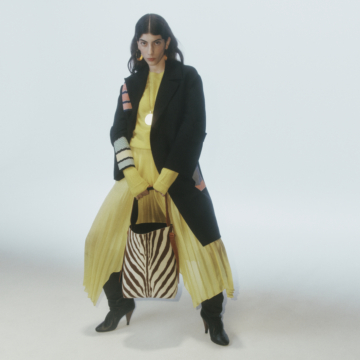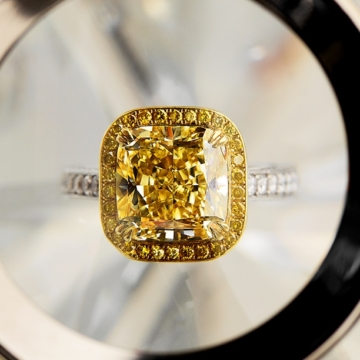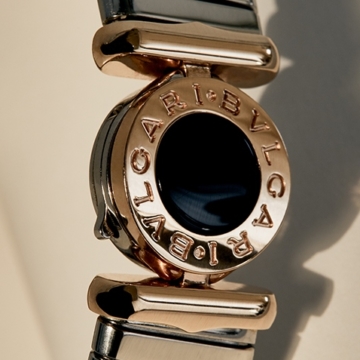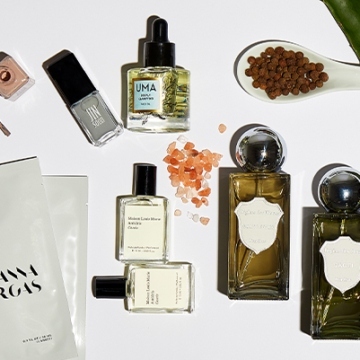

Brand Spotlight: Everything to Know About Celine
A perennially hot name in fashion, Celine has had a hold on those with a penchant for timeless elegance and modern sophistication for over 75 years. The French maison has grown from a small, custom children’s shoe boutique (yes, really!) to a global powerhouse with dynamic creative directors at the helm. Its journey to becoming what it is now was relatively rapid, but not without its twists and turns. Now, the brand is most well-known for its chic silhouettes, sharp jackets, modern accessories, and of course, leather handbags.
Here’s everything you’d ever want to know about Celine—from its humble beginnings, booming growth, highly coveted signature styles, and the “quiet luxury” aesthetic it touts today.
The Early Days & History of Celine
Celine was born in 1945, founded by French native Céline Vipiana and her husband Richard. It started as a custom, made-to-measure children’s shoe business in Paris and its first logo was not the interlocking C’s the brand is known for today, but a red elephant instead. Soon, Celine’s one shop turned into four—and in the early 1960s, began taking on women’s ready-to-wear and sportswear, with women’s shoes soon to follow. Together, the couple had a dedication to craftsmanship, quality, function, and style that would serve them well as the brand began to soon experience rapid growth. (More on that in a bit.)
In the early ‘70s, the red elephant logo was swapped for what is called the Blazon Chaine—the interlocking backward-facing C’s you’re probably familiar with today.
In 1987, a portion of the brand was acquired by French businessman and investor Bernard Arnault—though just ten years later, it became a part of the luxury powerhouse conglomerate known as LVMH (along with Louis Vuitton, Dior, Fendi, and countless other luxury brands). Celine was officially in great company—and soon to be under great creative direction, too.
Celine Meets Michael Kors
In 1997, designer Michael Kors (now famous for his eponymous line) was named the first true creative director of the brand, determined to elevate the brand’s landscape and reach with the backing power of LVMH. Kors is often credited for reviving the brand and bringing it back into the closets of fashion’s most elite. Under his leadership, Celine Dion even wore Celine while performing “My Heart Will Go On” (from 1997’s Titanic) at the 1998 Oscars. Two iconic Celines made history that night.
Kors left the brand in 2004 to focus on his eponymous label which later went on to receive resounding acclaim and financial success.
Phoebe Philo-Era Celine
Celine experienced a massive, transformative shift and growth under the creative direction of Phoebe Philo, who joined the team in 2008 after previously being at Chloé’s helm. With a focus on effortless luxury and modern minimalism—basically quiet luxury before quiet luxury had a name—the brand experienced a resurgence, reentering the arena as a major player in the fashion space. Under Philo, Celine’s pieces were refined, simple, and featured exquisite tailoring with sharp silhouettes.
Philo was also responsible for introducing iconic accessories—like the Luggage Tote, the Trapeze bag, and the Trio. The high-quality, ubiquitous leather goods by Celine have become as synonymous with the brand as its signature silk trousers and oversized coats.
Celine Now
After almost 10 years at the helm of Celine, Phoebe Philo departed in 2018, and the brand began a new chapter under the creative leadership of Hedi Silmane (known for his previous work at both Saint Laurent and Dior Homme). In contrast to Philo’s penchant for femininity and chic silhouettes, Silmane had an edgier aesthetic that he brought to the brand. His first debut collection was presented in September 2018, and stood out for its bold, glitzier designs—a stark contract to the minimalism made famous by Philo.
His first handbag design, the “Celine 16” was a massive hit. Beyond bags, Silmane was the architect behind Celine’s new look that featured fresh leather jackets, party dresses, and sharp silhouettes. Although the change in creative director was certainly an adjustment for some fashion lovers, for the most part, Slimane’s tenure has been mostly met with critical acclaim and financial success.
Today, Celine has 178 boutiques across the globe while also being available in popular luxury retailers like Nordstrom and Bergdorf Goodman.
Shop Celine Favorites
Celine’s “It” bag — the Classique Triomphe —really is a classic, and would be a forever staple in just about anyone’s bag rotation.
Celine has mastered the art of classic luxury staples with just the right amount of logo and label love. The Triomphe Belt is most often made with calfskin leather and features the iconic Triomphe logo with gold hardware and a collar stud.
No, this isn’t your dad’s baseball cap. Celine is known for its logo-adorned baseball cap styles, which makes for a more accessibly priced (yet still chic) accessory by the brand.
Again, one of Celine’s hallmarks is its accessories with understated yet unmistakable branding. Subtle details and accents like small gold-hardware logos on the brand’s sunglasses are just one of the reasons why Celine is so popular with the “stealth wealth” crowd—aka, those that prefer minimalist brands like The Row and Khaite over ones known for flashier, logo-adorned pieces. Whether you’re looking for oversized frames or retro-inspired aviators, you’ll certainly find a pair of Celine sunglasses that will get endless “those look like they were made for you”s.




